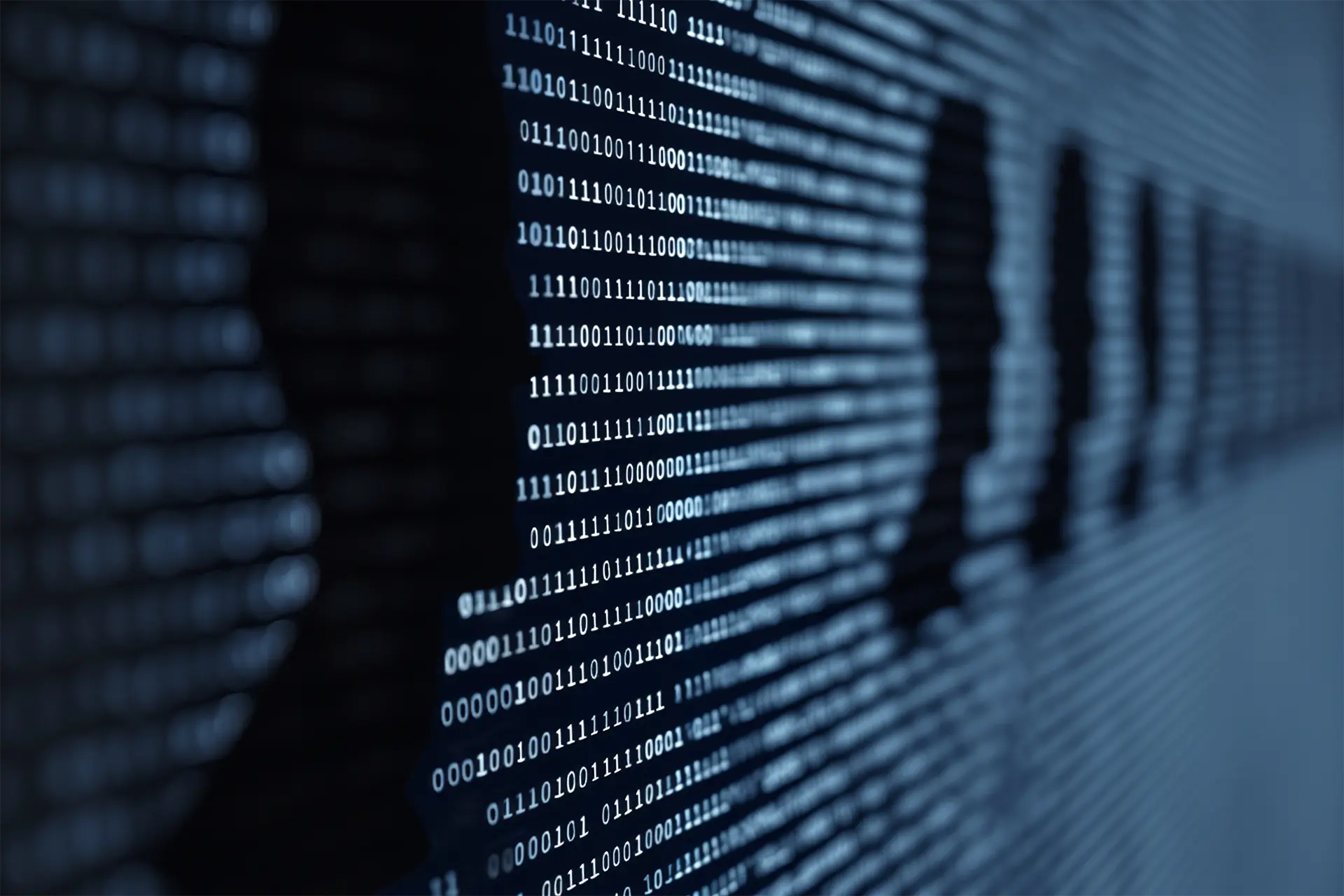Table of Contents
- What is anonymization of personal data?
- Data anonymization techniques
- Benefits of data anonymization
- Challenges in data anonymization
- Technical and organizational measures for data anonymization
Anonymization techniques are essential to ensure that sensitive information cannot be attributed to an identified or identifiable natural person.
In this article we will explore in detail:
- What it means to anonymize data,
- The techniques used,
- The benefits,
- The challenges associated with this practice.
What is anonymization of personal data?
Anonymization of personal data refers to modifying data in such a way that it cannot be attributed to a specific individual, either directly or indirectly, without the use of additional information.
This involves ensuring that such additional information is stored separately and is subject to technical and organizational measures aimed at guaranteeing that personal data cannot be attributed to a specific data subject without the use of additional information.
Data anonymization techniques
Anonymizing personal data requires applying various techniques to ensure that information cannot be attributed to an identified or identifiable person. Here is a detailed overview of the main data anonymization techniques:
Pseudonymization
Pseudonymization is a technique where direct identifiers like names, phone numbers, or addresses are replaced with pseudonyms, such as codes or unique numbers. For example, the name “John Doe” might be replaced with a code like “ID12345.”
Advantages:
- Facilitates data protection during personal data processing while retaining the possibility of reidentification if necessary.
Useful in scenarios where data needs to be retained for future verification or auditing purposes.
Disadvantages:
- Does not provide complete anonymization, as data can be traced back to the original identity through additional information.
Data aggregation
Data aggregation involves combining data from multiple individuals into groups or sets so that it is not possible to trace back to a single individual. For example, instead of recording individual sales for each customer, one might aggregate total sales for a month.
Advantages:
- Reduces the risk of identifying individual people.
- Facilitates statistical analysis without compromising privacy.
Disadvantages:
- Can reduce the granularity and accuracy of data.
- Not applicable to all types of data, especially when detailed precision is needed.
Generalization
Generalization involves reducing the precision of data to prevent specific identification of individuals. For instance, instead of recording a person’s exact age, one might record an age range (e.g., 30-40 years).
Advantages:
- Reduces the risk of direct identification while maintaining good data usability.
- Relatively simple to implement and understand.
Disadvantages:
- Loss of precision can negatively affect analysis accuracy.
- Does not entirely eliminate the risk of reidentification, especially if combined with other data sets.
Data suppression
Data suppression involves removing parts of information from datasets. For example, one might remove fields like names, addresses, phone numbers, or other identifying information.
Advantages:
- Significantly reduces the risk of identification.
- Effective for protecting sensitive information.
Disadvantages:
- Can severely limit the data’s utility for analysis.
- Removing critical information may impede complete understanding of the data.
Data perturbation
Data perturbation involves adding “noise” to original data so that the answers provided do not exactly match reality but maintain the same statistical properties. For example, employee salaries might be slightly altered by adding or subtracting a small random amount.
Advantages:
- Maintains the statistical properties of the data, allowing for accurate analysis.
- Reduces the risk of identification through advanced analysis techniques.
Disadvantages:
- Data quality can be negatively affected.
- If not applied correctly, can lead to misleading results in analysis.
K-anonymity
K-anonymity is an anonymization technique that ensures each individual in a data set cannot be distinguished from at least k-1 other individuals. In other words, each record would share the same characteristics as at least k-1 other records.
Advantages:
- Provides a guaranteed level of anonymity, reducing the risk of identification.
- Particularly useful for large datasets.
Disadvantages:
- Choosing the value of k can be complex and impacts the level of anonymity.
- Does not fully protect against correlation attacks with other data sources.
Differential privacy
Differential privacy is an advanced approach that adds controlled noise to data or data query results. This ensures that the output does not reveal sensitive information about specific individuals.
Advantages:
- Provides rigorous protection against reidentification.
- Particularly effective for large datasets and query-based analysis.
Disadvantages:
- Technical complexity can make implementation challenging.
- Requires an advanced understanding of differential privacy techniques.

Benefits of data anonymization
The anonymization of personal data offers numerous benefits:
- Protection of privacy
Reduces the risk of personal data being misused or individuals being identified without their consent. - Legal compliance
Helps organizations comply with data protection regulations like the GDPR, which require technical and organizational measures intended to ensure data security. - Data security
Even in case of data breaches, anonymized data reduces the risk of harm to individuals involved. - Flexibility of use
Anonymized data can be used for research and analysis without violating individual privacy, fostering innovation and the development of new products and services.
Challenges in data anonymization
Despite its benefits, data anonymization presents some challenges:
- Risk of reidentification
With advanced data analysis techniques, anonymized data may be reidentified. Therefore, it is crucial to apply robust technical and organizational measures to minimize this risk. - Balancing utility and privacy
Anonymizing data can reduce its utility for analysis. Organizations must find a balance between privacy protection and maintaining data quality. - Continuous compliance
Data protection regulations are continually evolving, and anonymization techniques must adapt accordingly to ensure compliance.
Technical and organizational measures for data anonymization
To ensure that personal data are adequately anonymized, it is essential to implement technical and organizational measures. These include:
Advanced cryptanalysis
Use of encryption algorithms to protect sensitive data.
- Access control
Limiting access to anonymized data only to authorized personnel. - Audit and monitoring
Regularly monitoring access and use of data to detect any abuse or violations. - Staff training
Educating employees on anonymization practices and data protection. - Impact assessments
Conducting regular assessments to identify risks associated with data and necessary mitigation measures.
In conclusion, using techniques like pseudonymization and others described above, companies can reduce identification risks and improve data security. However, it is essential to address challenges related to reidentification and balancing privacy and utility by implementing effective technical and organizational measures.
FAQ
- What is data anonymization?
Data anonymization is a process that renders data untraceable to an identified or identifiable individual without the use of additional information. - What are the main data anonymization techniques?
The main techniques include pseudonymization, gregation, generalization, suppression and erturbation. - Why is it important to anonymize personal data?
Anonymizing personal data protects individuals’ privacy, ensures legal compliance, and reduces risks associated with potential data breaches. - What are the benefits of data anonymization?
The benefits include privacy protection, data security, legal compliance and the ability to use data for research and analysis without compromising privacy. - What are the challenges in data anonymization?
The main challenges are the risk of reidentification, balancing utility and privacy and the need for continuous compliance with data protection regulations. - What is pseudonymization?
Pseudonymization is an anonymization technique that replaces direct identifiers with pseudonyms while keeping additional information separate and protected. - How can anonymized data be kept secure?
Implement technical and organizational measures such as encryption, access control, audits, staff training and impact assessments. - What is the difference between anonymization and pseudonymization?
Anonymization makes data completely untraceable, whereas pseudonymization replaces direct identifiers with pseudonyms, allowing for reidentification with additional information. - How does data aggregation contribute to anonymization?
Aggregation combines data from multiple individuals into groups, making it difficult to identify a single individual. - How does generalization impact data privacy?
Generalization reduces data precision, making it less likely to specifically identify an individual.

